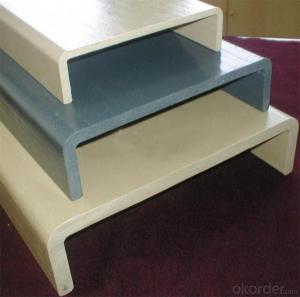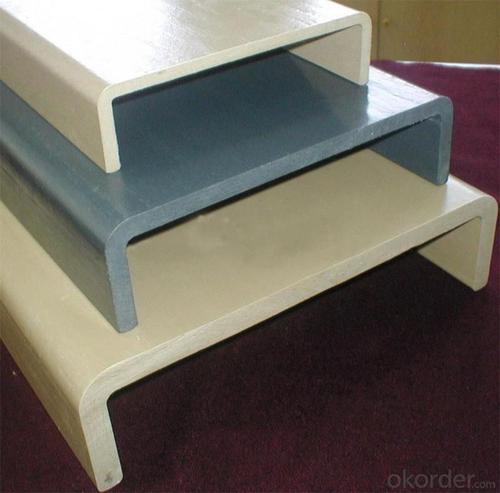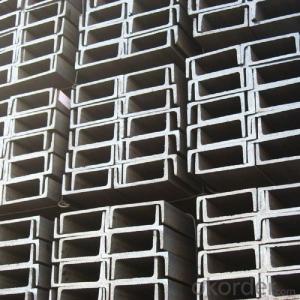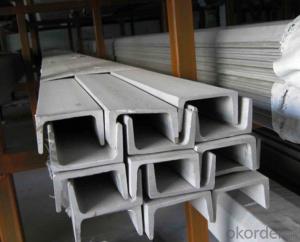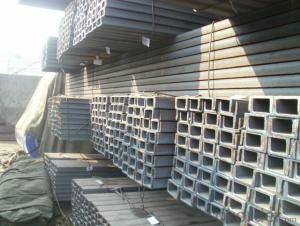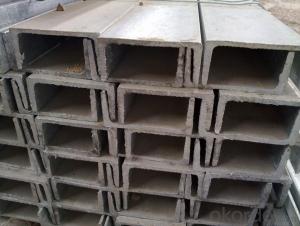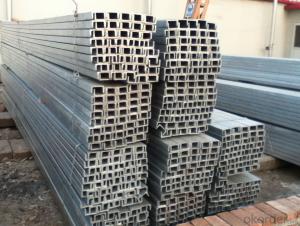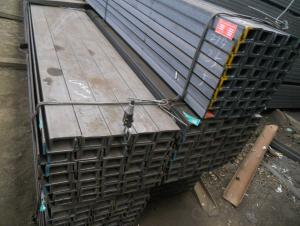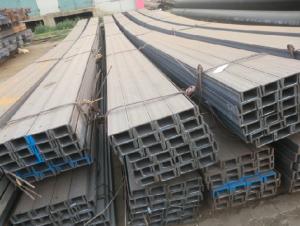Steel JIS U CHANNEL 50-300MM GB Standard JIS G3192
- Loading Port:
- Tianjin
- Payment Terms:
- TT or LC
- Min Order Qty:
- 25 m.t.
- Supply Capability:
- 200000 m.t./month
OKorder Service Pledge
OKorder Financial Service
You Might Also Like
Product Description:
OKorder is offering high quality Hot Rolled Steel I-Beams at great prices with worldwide shipping. Our supplier is a world-class manufacturer of steel, with our products utilized the world over. OKorder annually supplies products to European, North American and Asian markets. We provide quotations within 24 hours of receiving an inquiry and guarantee competitive prices.
Product Applications:
According to the needs of different structures, Angle can compose to different force support component, and also can be the connections between components. It is widely used in various building structures and engineering structures such as roof beams, bridges, transmission towers, hoisting machinery and transport machinery, ships, industrial furnaces, reaction tower, container frame and warehouse etc
Product Advantages:
OKorder's Steel I-Beams are durable, strong, and resist corrosion.
Main Product Features:
· Premium quality
· Prompt delivery & seaworthy packing (30 days after receiving deposit)
· Corrosion resistance
· Can be recycled and reused
· Mill test certification
· Professional Service
· Competitive pricing
Product Specifications:
Manufacture: Hot rolled
Grade: Q195 – 235
Certificates: ISO, SGS, BV, CIQ
Length: 6m – 12m, as per customer request
Packaging: Export packing, nude packing, bundled
Sizes: 25mm-250mm | ||||||||||||
a*t | ||||||||||||
25*2.5-4.0 | 70*6.0-9.0 | 130*9.0-15 | ||||||||||
30*2.5-6.6 | 75*6.0-9.0 | 140*10-14 | ||||||||||
36*3.0-5.0 | 80*5.0-10 | 150*10-20 | ||||||||||
38*2.3-6.0 | 90*7.0-10 | 160*10-16 | ||||||||||
40*3.0-5.0 | 100*6.0-12 | 175*12-15 | ||||||||||
45*4.0-6.0 | 110*8.0-10 | 180*12-18 | ||||||||||
50*4.0-6.0 | 120*6.0-15 | 200*14-25 | ||||||||||
60*4.0-8.0 | 125*8.0-14 | 250*25 | ||||||||||
FAQ:
Q1: What makes stainless steel stainless?
A1: Stainless steel must contain at least 10.5 % chromium. It is this element that reacts with the oxygen in the air to form a complex chrome-oxide surface layer that is invisible but strong enough to prevent further oxygen from "staining" (rusting) the surface. Higher levels of chromium and the addition of other alloying elements such as nickel and molybdenum enhance this surface layer and improve the corrosion resistance of the stainless material.
Q2: Can stainless steel rust?
A2: Stainless does not "rust" as you think of regular steel rusting with a red oxide on the surface that flakes off. If you see red rust it is probably due to some iron particles that have contaminated the surface of the stainless steel and it is these iron particles that are rusting. Look at the source of the rusting and see if you can remove it from the surface.
Q3: How do you package the angle steel when shipping?
A3: All goods are packed in bundles with steel strips and shipped by container or break bulk.
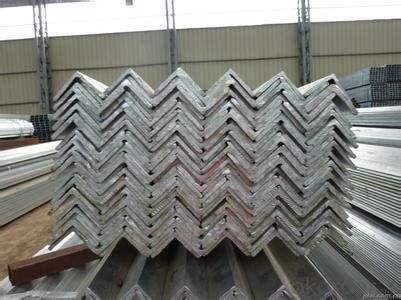
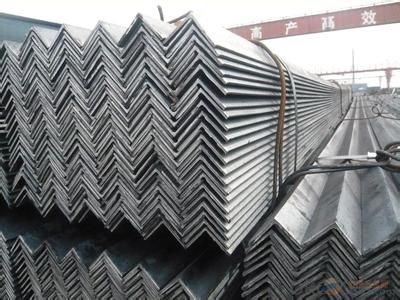
- Q: What is the allowable bending strength of Q235 channel steel? Why does the mechanical manual have no bending strength?
- The bending strength value is 235MPa, and the yield value decreases with the increase of the thickness of the material.The mechanical design manual is just some information about the design and the bending strength is a description of the performance of the steel.
- Q: Can steel channels be used for creating staircases or handrails?
- Yes, steel channels can be used for creating staircases or handrails. Steel channels provide structural strength and durability, making them suitable for supporting the weight and ensuring the stability of staircases and handrails. Additionally, steel channels can be easily customized and fabricated into various shapes and sizes to meet the specific requirements of the staircase or handrail design.
- Q: What are the different types of steel channel connections for wall framing?
- There are several different types of steel channel connections that can be used for wall framing. These connections are designed to provide stability and strength to the wall structure. One common type of steel channel connection is the welded connection. In this type of connection, the steel channels are joined together by welding them at the intersection points. This provides a strong and durable connection that is resistant to movement and shifting. Another type of steel channel connection is the bolted connection. In this type of connection, the steel channels are joined together using bolts and nuts. This allows for easy assembly and disassembly, making it a popular choice for temporary structures or structures that may need to be modified in the future. A third type of steel channel connection is the bracket connection. In this type of connection, brackets are used to secure the steel channels together. This type of connection is often used in situations where a more flexible or adjustable connection is required. Additionally, there are specialized types of steel channel connections that are designed for specific purposes. For example, there are connections that are specifically designed for seismic or high wind load conditions, which provide additional strength and stability to the wall framing. Overall, the choice of steel channel connection for wall framing will depend on factors such as the desired level of strength, flexibility, ease of assembly, and the specific requirements of the project. It is important to consult with a structural engineer or an experienced contractor to determine the most appropriate type of connection for a specific wall framing application.
- Q: Can steel channels be used for elevator shafts?
- Yes, steel channels can be used for elevator shafts. Steel channels provide the necessary strength and durability required for elevator shafts, making them a common choice in construction.
- Q: What is the elastic modulus of steel?
- The general definition of the modulus of elasticity is that the stresses in the one-way stress state are divided by the strain in that direction.
- Q: How do steel channels perform in terms of acoustic insulation?
- Steel channels are not typically known for their acoustic insulation properties. Steel, being a dense material, tends to conduct sound rather than absorb or block it. This means that steel channels may not provide significant acoustic insulation on their own. However, their performance can be improved by incorporating additional materials or techniques that enhance soundproofing. For instance, adding insulation material, such as mineral wool or acoustic foam, between the steel channels can help dampen sound transmission. Additionally, using resilient mounting systems or decoupling techniques can further reduce the transfer of vibrations and noise through the steel channels. Therefore, while steel channels alone may not offer substantial acoustic insulation, they can be part of a larger soundproofing strategy when combined with appropriate materials and techniques.
- Q: I encountered in the construction of 2 short 28# channel welding, processed into beams, how to weld? Do I have to have stiffened panels? How many pieces? What's the thickness of the stiffener? I heard that there is a book called "metal processing manual", which has instructions, but I do not have the book. Please give settlement.
- If the gap between the two weldment is not conducive to welding, it can be welded with a piece of steel plate. If the assembly gap is reasonable, direct rust removal and welding can be done.
- Q: Can steel channels be used in oil and gas industry applications?
- Yes, steel channels can be used in oil and gas industry applications. Steel channels are commonly used for structural support in various industries, including oil and gas. They provide strength, durability, and stability, making them suitable for a wide range of applications such as platform construction, piping support systems, and equipment mounting.
- Q: How do steel channels contribute to the stability of a structure during hurricanes?
- Steel channels contribute to the stability of a structure during hurricanes by providing structural support and reinforcement. These channels are designed to distribute the forces exerted by high winds and storm surges, effectively strengthening the overall integrity of the building. Additionally, steel channels help to prevent the structure from swaying or collapsing under the intense pressure and turbulence caused by hurricane conditions.
- Q: What are the typical tolerances for steel channels?
- The typical tolerances for steel channels vary depending on the specific dimension and quality requirements. However, common tolerances for steel channels generally fall within a range of +/- 0.005 to 0.010 inches for dimensions such as width, depth, and thickness.
Send your message to us
Steel JIS U CHANNEL 50-300MM GB Standard JIS G3192
- Loading Port:
- Tianjin
- Payment Terms:
- TT or LC
- Min Order Qty:
- 25 m.t.
- Supply Capability:
- 200000 m.t./month
OKorder Service Pledge
OKorder Financial Service
Similar products
Hot products
Hot Searches
Related keywords
